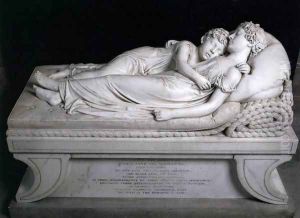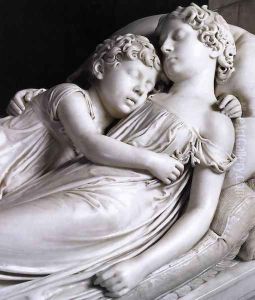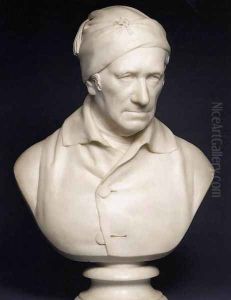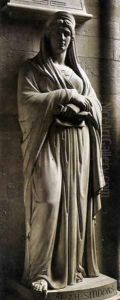Sir Francis Legatt Chantrey Paintings
Sir Francis Legatt Chantrey was an eminent English sculptor of the late 18th and early 19th centuries, renowned for his portrait statues and busts in the neoclassical style. Born on April 7, 1781, in Norton, Derbyshire, Chantrey showed an early aptitude for art, but his initial career path was in the field of wood carving and gilding, which he began after being apprenticed to a local carver and gilder at the age of twelve.
Despite his humble beginnings, Chantrey was determined to become a sculptor. He moved to London in 1802 to pursue his ambitions and became a student at the Royal Academy Schools by 1804. His talent was soon recognized, and he received commissions for portrait busts, which were very fashionable at the time. Chantrey's work was marked by its realism and attention to detail, which set it apart from the more idealized representations typical of the period.
Over time, Chantrey became one of the most prominent sculptors in Britain, creating monuments and statues that can still be seen today in various public spaces, including churches, squares, and institutions. Among his notable works are the statues of King George III in Windsor, King George IV in Trafalgar Square, and the monument to James Watt in Westminster Abbey. His work was not limited to public figures; he also created a number of funerary monuments that reflected a romantic sensibility and were highly acclaimed for their emotional depth.
Chantrey was knighted in 1835 by King William IV, which was a testament to his significant contribution to British art and his status in society. He was also a keen collector of art and a generous patron to other artists. When he died on November 25, 1841, he left a considerable fortune to the Royal Academy of Arts to establish the Chantrey Bequest, a fund to purchase works of art for the nation, which has acquired many important works for the British collection.
Throughout his career, Chantrey's works were characterized by their lifelike quality and the skill with which he captured the personalities of his subjects. His legacy is preserved not only in his sculptures but also in the Chantrey Bequest, which continues to support the acquisition of artworks for public collections in the UK.



